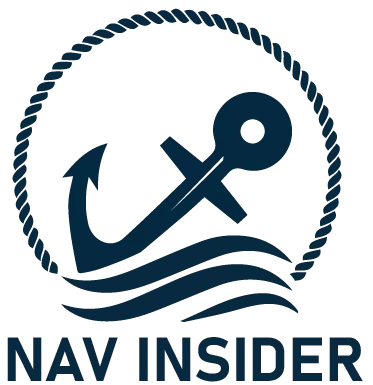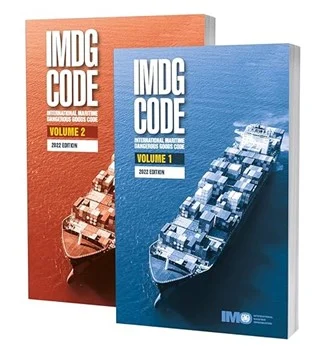IMDG Code: A Complete Guide to Dangerous Goods Management on Ships
Safety in the transport of dangerous goods by sea is not just a consideration, it is a necessity. The IMDG Code is a set of international rules designed to ensure that dangerous goods are managed safely to protect the ship, crew and the environment.
What is the IMDG Code?
The IMDG Code is a thorough set of rules intended to avoid disasters involving dangerous cargo on board ships. It describes how to handle, store, pack, label, and transport dangerous materials and was made by the International Maritime Organization (IMO).
From dangerous materials to flammable gases to corrosive chemicals, the IMDG Code leads you in handling them safely to keep crew members, vessel, and the environment safe.
Why is the IMDG Code Important?
The shipping business carries a variety of cargo, a few of which is perilous if improperly dealt with. The IMDG Code acts as a safeguard against emergencies.
Avoids mishaps: Appropriate labeling and packaging reduce the possibility of spills, explosions, and leaks.
Ensures adherence: Vessels that violate the code risk fines, imprisonment, or legal action.
Protects the environment: From chemical contamination to oil slicks, spills of hazardous materials can cause enormous damage.
IMDG Code Structure: A brief overview
There are two volumes and a supplement to the IMDG Code:
General principles, classification, packaging, and handling instructions are all included in Volume 1.
Volume 2: Contains special arrangements, transportation regulations, and the Dangerous Goods List.
Emergency Schedules (EmS) and the Medical First Aid Guide (MFAG) are included as a supplement for crisis situations.
The 9 Classes of Dangerous Goods:
Dangerous substances are classified into 9 classes according to their principal hazard:
Explosives (Class 1): Substances which are competent of exploding or of causing a sudden discharge of gas at or over atmospheric pressure. Examples are explosive and firecrackers. Class 1 explosives range from substances creating large explosions to substances with insignificant risks or no appreciable threat, including very insensitive types.
Gases (Class 2): Compressed, liquefied, or dissolved gases. Classified into flammable (2.1), non-flammable/non-toxic (2.2), and toxic gases (2.3).
Flammable Liquids (Class 3): Liquids that burn easily at low temperatures, such as gasoline and ethanol.
Flammable Solids (Class 4): Materials that ignite by friction, moisture, or spontaneous ignition. Includes combustible solids (4.1), spontaneously combustible items (4.2), and hazardous when wet materials (4.3).
Oxidizing Substances and Organic Peroxides (Class 5): Materials that emit oxygen and increase the fire, like ammonium nitrate and benzoyl peroxide.
Toxic and Infectious Substances (Class 6): Hazardous materials through inhalation, ingestion, or contact, such as toxic chemicals (6.1) and infectious waste (6.2).
Radioactive Materials ( Class 7) : Materials that emit ionizing radiation, such as uranium and plutonium, are classified as radioactive materials (Class 7).
Corrosives (Class 8): Substances like sodium hydroxide and sulphuric acid that can cause serious skin burns or corrode metal.
Class 9: Miscellaneous Hazardous Materials: Materials that fall outside of the other categories but are nonetheless unsafe, such as asbestos and lithium batteries.
Separation and Segregation: Maintaining Safety
Certain perilous materials are incapable to be placed near to one another since they may violently react. This is why separation and segregation regulations are enforced.
Separation: Keeping cargo of certain types apart by a certain distance so that there will be no reactions, e.g., flammable fluids from oxidizers.
Segregation: Degrees of separation from merely being “away from” on the same deck, to being “separated longitudinally” by a full compartment for ideal safety.
Example:
Explosives (Class 1) and Flammable Fluids (Class 3) should be completely separated.
Corrosives (Class 8) and Dangerous When Wet materials (Class 4.3) must be separated in order to avoid violent reactions.
Labelling and Marking: Clear Communication
The IMDG Code employs special labels and marks to indicate the nature of the hazard:
Labels: Diamond-shaped and color-coded symbols for each class.
Placards: Bigger labels displayed on containers or vehicles.
Marks: Text such as UN numbers, shipping names, and handling information.
Example: A Class 3 flammable fluid container will be marked with a red label and a flame symbol and a UN number like UN 1203 (gasoline).
Documentation: Critical Paperwork
All shipments of perilous goods must:
Dangerous Goods Declaration: Records all hazardous materials and emergency phone numbers.
Packing Certificate: Certifies cargo is packed according to IMDG regulations.
Emergency Response Instructions: Strategies for fighting fires, controlling spills, and first aid.
Training and Certification: Crucial Knowledge:
It is risky to handle perilous goods without training. The IMDG Code requires crew members to be trained in the following:
The 9 classes of dangerous goods.
Identifying incompatible cargo and segregation procedures.
Emergency procedures in case of fires, spills, and accidents.
Conclusion: Safety First, Always
The IMDG Code is not only regulations—it’s an essential safety tool that saves lives, vessels, and the environment. By adhering to its classification, segregation, labelling, and documentation regulations, seafarers can make their voyages secure and compliant.
The sea can be unpredictable, but your safety needn’t be. Adhere to the IMDG Code and keep your vessel, cargo, and personnel shielded from peril.


